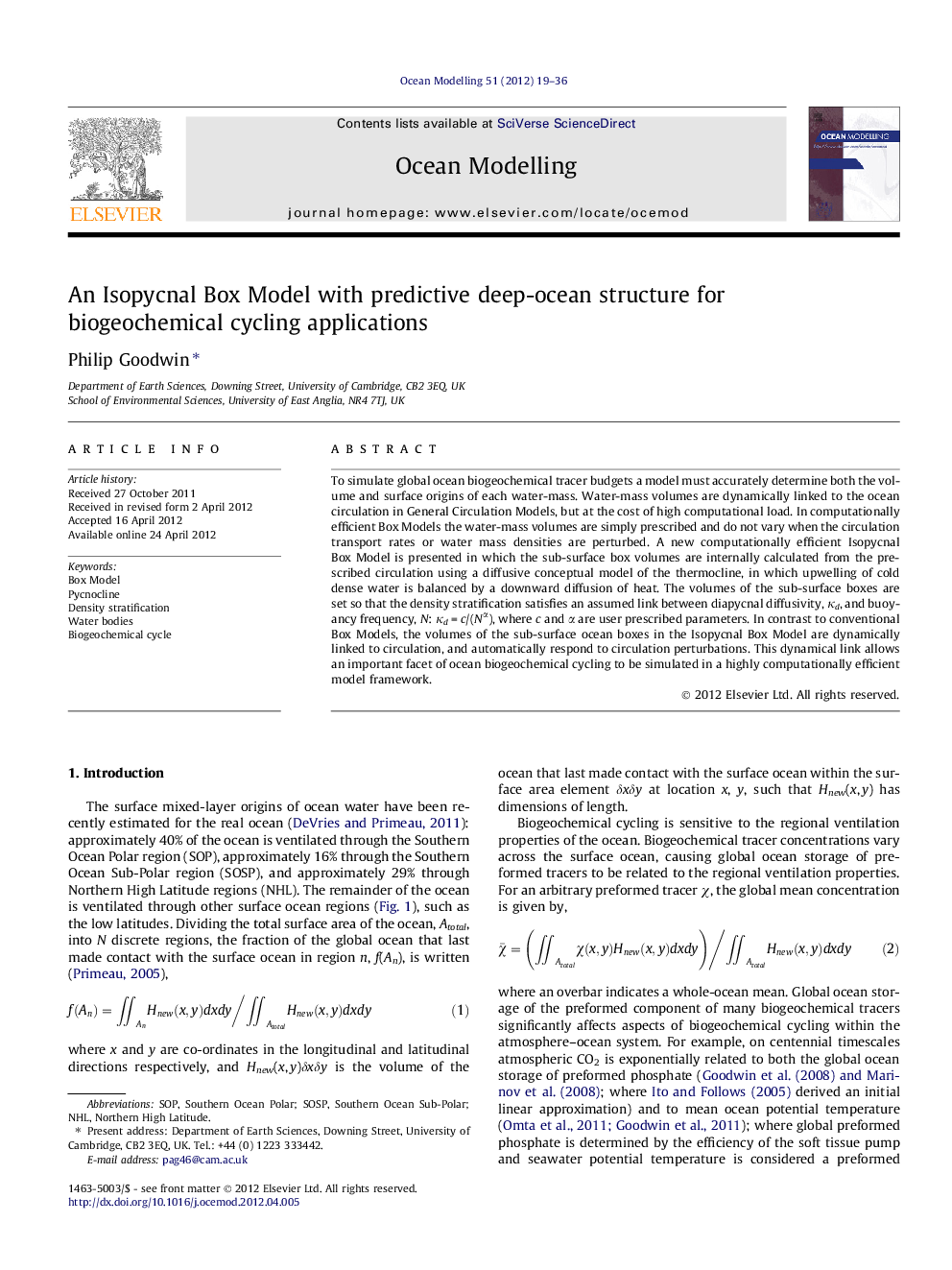| Article ID | Journal | Published Year | Pages | File Type |
|---|---|---|---|---|
| 4552194 | Ocean Modelling | 2012 | 18 Pages |
To simulate global ocean biogeochemical tracer budgets a model must accurately determine both the volume and surface origins of each water-mass. Water-mass volumes are dynamically linked to the ocean circulation in General Circulation Models, but at the cost of high computational load. In computationally efficient Box Models the water-mass volumes are simply prescribed and do not vary when the circulation transport rates or water mass densities are perturbed. A new computationally efficient Isopycnal Box Model is presented in which the sub-surface box volumes are internally calculated from the prescribed circulation using a diffusive conceptual model of the thermocline, in which upwelling of cold dense water is balanced by a downward diffusion of heat. The volumes of the sub-surface boxes are set so that the density stratification satisfies an assumed link between diapycnal diffusivity, κd, and buoyancy frequency, N: κd = c/(Nα), where c and α are user prescribed parameters. In contrast to conventional Box Models, the volumes of the sub-surface ocean boxes in the Isopycnal Box Model are dynamically linked to circulation, and automatically respond to circulation perturbations. This dynamical link allows an important facet of ocean biogeochemical cycling to be simulated in a highly computationally efficient model framework.
► Global biogeochemical tracer budgets are sensitive to water mass volumes. ► Water mass volumes are prescribed independently of ocean circulation in Box Models. ► A new Box Model is presented that internally relates box volumes to ocean circulation. ► Box volumes are set assuming diapycnic diffusivity is related to buoyancy frequency. ► The new model exhibits different behaviour to conventional Box Models when perturbed.
